Orthopedics
Neurology
Cardiology
Dermatology
Oncology
Cell Therapy
Gene Therapy
Tissue Engineering
Stem Cell Therapy
Hospitals
Research Laboratories
Pharmaceutical Companies
Academic Institutions
Musculoskeletal Disorders
Cognitive Disorders
Cardiovascular Diseases
Chronic Wounds
North America
Europe
South America
Asia Pacific
Middle East and Africa
North America Outlook (USD Billion, 2019-2035)
North America Regenerative Medicine Market by Application Type
Orthopedics
Neurology
Cardiology
Dermatology
Oncology
North America Regenerative Medicine Market by Product Type
Cell Therapy
Gene Therapy
Tissue Engineering
Stem Cell Therapy
North America Regenerative Medicine Market by End User Type
Hospitals
Research Laboratories
Pharmaceutical Companies
Academic Institutions
North America Regenerative Medicine Market by Therapeutic Area Type
Musculoskeletal Disorders
Cognitive Disorders
Cardiovascular Diseases
Chronic Wounds
North America Regenerative Medicine Market by Regional Type
US
Canada
US Outlook (USD Billion, 2019-2035)
US Regenerative Medicine Market by Application Type
Orthopedics
Neurology
Cardiology
Dermatology
Oncology
US Regenerative Medicine Market by Product Type
Cell Therapy
Gene Therapy
Tissue Engineering
Stem Cell Therapy
US Regenerative Medicine Market by End User Type
Hospitals
Research Laboratories
Pharmaceutical Companies
Academic Institutions
US Regenerative Medicine Market by Therapeutic Area Type
Musculoskeletal Disorders
Cognitive Disorders
Cardiovascular Diseases
Chronic Wounds
CANADA Outlook (USD Billion, 2019-2035)
CANADA Regenerative Medicine Market by Application Type
Orthopedics
Neurology
Cardiology
Dermatology
Oncology
CANADA Regenerative Medicine Market by Product Type
Cell Therapy
Gene Therapy
Tissue Engineering
Stem Cell Therapy
CANADA Regenerative Medicine Market by End User Type
Hospitals
Research Laboratories
Pharmaceutical Companies
Academic Institutions
CANADA Regenerative Medicine Market by Therapeutic Area Type
Musculoskeletal Disorders
Cognitive Disorders
Cardiovascular Diseases
Chronic Wounds
Europe Outlook (USD Billion, 2019-2035)
Europe Regenerative Medicine Market by Application Type
Orthopedics
Neurology
Cardiology
Dermatology
Oncology
Europe Regenerative Medicine Market by Product Type
Cell Therapy
Gene Therapy
Tissue Engineering
Stem Cell Therapy
Europe Regenerative Medicine Market by End User Type
Hospitals
Research Laboratories
Pharmaceutical Companies
Academic Institutions
Europe Regenerative Medicine Market by Therapeutic Area Type
Musculoskeletal Disorders
Cognitive Disorders
Cardiovascular Diseases
Chronic Wounds
Europe Regenerative Medicine Market by Regional Type
Germany
UK
France
Russia
Italy
Spain
Rest of Europe
GERMANY Outlook (USD Billion, 2019-2035)
GERMANY Regenerative Medicine Market by Application Type
Orthopedics
Neurology
Cardiology
Dermatology
Oncology
GERMANY Regenerative Medicine Market by Product Type
Cell Therapy
Gene Therapy
Tissue Engineering
Stem Cell Therapy
GERMANY Regenerative Medicine Market by End User Type
Hospitals
Research Laboratories
Pharmaceutical Companies
Academic Institutions
GERMANY Regenerative Medicine Market by Therapeutic Area Type
Musculoskeletal Disorders
Cognitive Disorders
Cardiovascular Diseases
Chronic Wounds
UK Outlook (USD Billion, 2019-2035)
UK Regenerative Medicine Market by Application Type
Orthopedics
Neurology
Cardiology
Dermatology
Oncology
UK Regenerative Medicine Market by Product Type
Cell Therapy
Gene Therapy
Tissue Engineering
Stem Cell Therapy
UK Regenerative Medicine Market by End User Type
Hospitals
Research Laboratories
Pharmaceutical Companies
Academic Institutions
UK Regenerative Medicine Market by Therapeutic Area Type
Musculoskeletal Disorders
Cognitive Disorders
Cardiovascular Diseases
Chronic Wounds
FRANCE Outlook (USD Billion, 2019-2035)
FRANCE Regenerative Medicine Market by Application Type
Orthopedics
Neurology
Cardiology
Dermatology
Oncology
FRANCE Regenerative Medicine Market by Product Type
Cell Therapy
Gene Therapy
Tissue Engineering
Stem Cell Therapy
FRANCE Regenerative Medicine Market by End User Type
Hospitals
Research Laboratories
Pharmaceutical Companies
Academic Institutions
FRANCE Regenerative Medicine Market by Therapeutic Area Type
Musculoskeletal Disorders
Cognitive Disorders
Cardiovascular Diseases
Chronic Wounds
RUSSIA Outlook (USD Billion, 2019-2035)
RUSSIA Regenerative Medicine Market by Application Type
Orthopedics
Neurology
Cardiology
Dermatology
Oncology
RUSSIA Regenerative Medicine Market by Product Type
Cell Therapy
Gene Therapy
Tissue Engineering
Stem Cell Therapy
RUSSIA Regenerative Medicine Market by End User Type
Hospitals
Research Laboratories
Pharmaceutical Companies
Academic Institutions
RUSSIA Regenerative Medicine Market by Therapeutic Area Type
Musculoskeletal Disorders
Cognitive Disorders
Cardiovascular Diseases
Chronic Wounds
ITALY Outlook (USD Billion, 2019-2035)
ITALY Regenerative Medicine Market by Application Type
Orthopedics
Neurology
Cardiology
Dermatology
Oncology
ITALY Regenerative Medicine Market by Product Type
Cell Therapy
Gene Therapy
Tissue Engineering
Stem Cell Therapy
ITALY Regenerative Medicine Market by End User Type
Hospitals
Research Laboratories
Pharmaceutical Companies
Academic Institutions
ITALY Regenerative Medicine Market by Therapeutic Area Type
Musculoskeletal Disorders
Cognitive Disorders
Cardiovascular Diseases
Chronic Wounds
SPAIN Outlook (USD Billion, 2019-2035)
SPAIN Regenerative Medicine Market by Application Type
Orthopedics
Neurology
Cardiology
Dermatology
Oncology
SPAIN Regenerative Medicine Market by Product Type
Cell Therapy
Gene Therapy
Tissue Engineering
Stem Cell Therapy
SPAIN Regenerative Medicine Market by End User Type
Hospitals
Research Laboratories
Pharmaceutical Companies
Academic Institutions
SPAIN Regenerative Medicine Market by Therapeutic Area Type
Musculoskeletal Disorders
Cognitive Disorders
Cardiovascular Diseases
Chronic Wounds
REST OF EUROPE Outlook (USD Billion, 2019-2035)
REST OF EUROPE Regenerative Medicine Market by Application Type
Orthopedics
Neurology
Cardiology
Dermatology
Oncology
REST OF EUROPE Regenerative Medicine Market by Product Type
Cell Therapy
Gene Therapy
Tissue Engineering
Stem Cell Therapy
REST OF EUROPE Regenerative Medicine Market by End User Type
Hospitals
Research Laboratories
Pharmaceutical Companies
Academic Institutions
REST OF EUROPE Regenerative Medicine Market by Therapeutic Area Type
Musculoskeletal Disorders
Cognitive Disorders
Cardiovascular Diseases
Chronic Wounds
APAC Outlook (USD Billion, 2019-2035)
APAC Regenerative Medicine Market by Application Type
Orthopedics
Neurology
Cardiology
Dermatology
Oncology
APAC Regenerative Medicine Market by Product Type
Cell Therapy
Gene Therapy
Tissue Engineering
Stem Cell Therapy
APAC Regenerative Medicine Market by End User Type
Hospitals
Research Laboratories
Pharmaceutical Companies
Academic Institutions
APAC Regenerative Medicine Market by Therapeutic Area Type
Musculoskeletal Disorders
Cognitive Disorders
Cardiovascular Diseases
Chronic Wounds
APAC Regenerative Medicine Market by Regional Type
China
India
Japan
South Korea
Malaysia
Thailand
Indonesia
Rest of APAC
CHINA Outlook (USD Billion, 2019-2035)
CHINA Regenerative Medicine Market by Application Type
Orthopedics
Neurology
Cardiology
Dermatology
Oncology
CHINA Regenerative Medicine Market by Product Type
Cell Therapy
Gene Therapy
Tissue Engineering
Stem Cell Therapy
CHINA Regenerative Medicine Market by End User Type
Hospitals
Research Laboratories
Pharmaceutical Companies
Academic Institutions
CHINA Regenerative Medicine Market by Therapeutic Area Type
Musculoskeletal Disorders
Cognitive Disorders
Cardiovascular Diseases
Chronic Wounds
INDIA Outlook (USD Billion, 2019-2035)
INDIA Regenerative Medicine Market by Application Type
Orthopedics
Neurology
Cardiology
Dermatology
Oncology
INDIA Regenerative Medicine Market by Product Type
Cell Therapy
Gene Therapy
Tissue Engineering
Stem Cell Therapy
INDIA Regenerative Medicine Market by End User Type
Hospitals
Research Laboratories
Pharmaceutical Companies
Academic Institutions
INDIA Regenerative Medicine Market by Therapeutic Area Type
Musculoskeletal Disorders
Cognitive Disorders
Cardiovascular Diseases
Chronic Wounds
JAPAN Outlook (USD Billion, 2019-2035)
JAPAN Regenerative Medicine Market by Application Type
Orthopedics
Neurology
Cardiology
Dermatology
Oncology
JAPAN Regenerative Medicine Market by Product Type
Cell Therapy
Gene Therapy
Tissue Engineering
Stem Cell Therapy
JAPAN Regenerative Medicine Market by End User Type
Hospitals
Research Laboratories
Pharmaceutical Companies
Academic Institutions
JAPAN Regenerative Medicine Market by Therapeutic Area Type
Musculoskeletal Disorders
Cognitive Disorders
Cardiovascular Diseases
Chronic Wounds
SOUTH KOREA Outlook (USD Billion, 2019-2035)
SOUTH KOREA Regenerative Medicine Market by Application Type
Orthopedics
Neurology
Cardiology
Dermatology
Oncology
SOUTH KOREA Regenerative Medicine Market by Product Type
Cell Therapy
Gene Therapy
Tissue Engineering
Stem Cell Therapy
SOUTH KOREA Regenerative Medicine Market by End User Type
Hospitals
Research Laboratories
Pharmaceutical Companies
Academic Institutions
SOUTH KOREA Regenerative Medicine Market by Therapeutic Area Type
Musculoskeletal Disorders
Cognitive Disorders
Cardiovascular Diseases
Chronic Wounds
MALAYSIA Outlook (USD Billion, 2019-2035)
MALAYSIA Regenerative Medicine Market by Application Type
Orthopedics
Neurology
Cardiology
Dermatology
Oncology
MALAYSIA Regenerative Medicine Market by Product Type
Cell Therapy
Gene Therapy
Tissue Engineering
Stem Cell Therapy
MALAYSIA Regenerative Medicine Market by End User Type
Hospitals
Research Laboratories
Pharmaceutical Companies
Academic Institutions
MALAYSIA Regenerative Medicine Market by Therapeutic Area Type
Musculoskeletal Disorders
Cognitive Disorders
Cardiovascular Diseases
Chronic Wounds
THAILAND Outlook (USD Billion, 2019-2035)
THAILAND Regenerative Medicine Market by Application Type
Orthopedics
Neurology
Cardiology
Dermatology
Oncology
THAILAND Regenerative Medicine Market by Product Type
Cell Therapy
Gene Therapy
Tissue Engineering
Stem Cell Therapy
THAILAND Regenerative Medicine Market by End User Type
Hospitals
Research Laboratories
Pharmaceutical Companies
Academic Institutions
THAILAND Regenerative Medicine Market by Therapeutic Area Type
Musculoskeletal Disorders
Cognitive Disorders
Cardiovascular Diseases
Chronic Wounds
INDONESIA Outlook (USD Billion, 2019-2035)
INDONESIA Regenerative Medicine Market by Application Type
Orthopedics
Neurology
Cardiology
Dermatology
Oncology
INDONESIA Regenerative Medicine Market by Product Type
Cell Therapy
Gene Therapy
Tissue Engineering
Stem Cell Therapy
INDONESIA Regenerative Medicine Market by End User Type
Hospitals
Research Laboratories
Pharmaceutical Companies
Academic Institutions
INDONESIA Regenerative Medicine Market by Therapeutic Area Type
Musculoskeletal Disorders
Cognitive Disorders
Cardiovascular Diseases
Chronic Wounds
REST OF APAC Outlook (USD Billion, 2019-2035)
REST OF APAC Regenerative Medicine Market by Application Type
Orthopedics
Neurology
Cardiology
Dermatology
Oncology
REST OF APAC Regenerative Medicine Market by Product Type
Cell Therapy
Gene Therapy
Tissue Engineering
Stem Cell Therapy
REST OF APAC Regenerative Medicine Market by End User Type
Hospitals
Research Laboratories
Pharmaceutical Companies
Academic Institutions
REST OF APAC Regenerative Medicine Market by Therapeutic Area Type
Musculoskeletal Disorders
Cognitive Disorders
Cardiovascular Diseases
Chronic Wounds
South America Outlook (USD Billion, 2019-2035)
South America Regenerative Medicine Market by Application Type
Orthopedics
Neurology
Cardiology
Dermatology
Oncology
South America Regenerative Medicine Market by Product Type
Cell Therapy
Gene Therapy
Tissue Engineering
Stem Cell Therapy
South America Regenerative Medicine Market by End User Type
Hospitals
Research Laboratories
Pharmaceutical Companies
Academic Institutions
South America Regenerative Medicine Market by Therapeutic Area Type
Musculoskeletal Disorders
Cognitive Disorders
Cardiovascular Diseases
Chronic Wounds
South America Regenerative Medicine Market by Regional Type
Brazil
Mexico
Argentina
Rest of South America
BRAZIL Outlook (USD Billion, 2019-2035)
BRAZIL Regenerative Medicine Market by Application Type
Orthopedics
Neurology
Cardiology
Dermatology
Oncology
BRAZIL Regenerative Medicine Market by Product Type
Cell Therapy
Gene Therapy
Tissue Engineering
Stem Cell Therapy
BRAZIL Regenerative Medicine Market by End User Type
Hospitals
Research Laboratories
Pharmaceutical Companies
Academic Institutions
BRAZIL Regenerative Medicine Market by Therapeutic Area Type
Musculoskeletal Disorders
Cognitive Disorders
Cardiovascular Diseases
Chronic Wounds
MEXICO Outlook (USD Billion, 2019-2035)
MEXICO Regenerative Medicine Market by Application Type
Orthopedics
Neurology
Cardiology
Dermatology
Oncology
MEXICO Regenerative Medicine Market by Product Type
Cell Therapy
Gene Therapy
Tissue Engineering
Stem Cell Therapy
MEXICO Regenerative Medicine Market by End User Type
Hospitals
Research Laboratories
Pharmaceutical Companies
Academic Institutions
MEXICO Regenerative Medicine Market by Therapeutic Area Type
Musculoskeletal Disorders
Cognitive Disorders
Cardiovascular Diseases
Chronic Wounds
ARGENTINA Outlook (USD Billion, 2019-2035)
ARGENTINA Regenerative Medicine Market by Application Type
Orthopedics
Neurology
Cardiology
Dermatology
Oncology
ARGENTINA Regenerative Medicine Market by Product Type
Cell Therapy
Gene Therapy
Tissue Engineering
Stem Cell Therapy
ARGENTINA Regenerative Medicine Market by End User Type
Hospitals
Research Laboratories
Pharmaceutical Companies
Academic Institutions
ARGENTINA Regenerative Medicine Market by Therapeutic Area Type
Musculoskeletal Disorders
Cognitive Disorders
Cardiovascular Diseases
Chronic Wounds
REST OF SOUTH AMERICA Outlook (USD Billion, 2019-2035)
REST OF SOUTH AMERICA Regenerative Medicine Market by Application Type
Orthopedics
Neurology
Cardiology
Dermatology
Oncology
REST OF SOUTH AMERICA Regenerative Medicine Market by Product Type
Cell Therapy
Gene Therapy
Tissue Engineering
Stem Cell Therapy
REST OF SOUTH AMERICA Regenerative Medicine Market by End User Type
Hospitals
Research Laboratories
Pharmaceutical Companies
Academic Institutions
REST OF SOUTH AMERICA Regenerative Medicine Market by Therapeutic Area Type
Musculoskeletal Disorders
Cognitive Disorders
Cardiovascular Diseases
Chronic Wounds
MEA Outlook (USD Billion, 2019-2035)
MEA Regenerative Medicine Market by Application Type
Orthopedics
Neurology
Cardiology
Dermatology
Oncology
MEA Regenerative Medicine Market by Product Type
Cell Therapy
Gene Therapy
Tissue Engineering
Stem Cell Therapy
MEA Regenerative Medicine Market by End User Type
Hospitals
Research Laboratories
Pharmaceutical Companies
Academic Institutions
MEA Regenerative Medicine Market by Therapeutic Area Type
Musculoskeletal Disorders
Cognitive Disorders
Cardiovascular Diseases
Chronic Wounds
MEA Regenerative Medicine Market by Regional Type
GCC Countries
South Africa
Rest of MEA
GCC COUNTRIES Outlook (USD Billion, 2019-2035)
GCC COUNTRIES Regenerative Medicine Market by Application Type
Orthopedics
Neurology
Cardiology
Dermatology
Oncology
GCC COUNTRIES Regenerative Medicine Market by Product Type
Cell Therapy
Gene Therapy
Tissue Engineering
Stem Cell Therapy
GCC COUNTRIES Regenerative Medicine Market by End User Type
Hospitals
Research Laboratories
Pharmaceutical Companies
Academic Institutions
GCC COUNTRIES Regenerative Medicine Market by Therapeutic Area Type
Musculoskeletal Disorders
Cognitive Disorders
Cardiovascular Diseases
Chronic Wounds
SOUTH AFRICA Outlook (USD Billion, 2019-2035)
SOUTH AFRICA Regenerative Medicine Market by Application Type
Orthopedics
Neurology
Cardiology
Dermatology
Oncology
SOUTH AFRICA Regenerative Medicine Market by Product Type
Cell Therapy
Gene Therapy
Tissue Engineering
Stem Cell Therapy
SOUTH AFRICA Regenerative Medicine Market by End User Type
Hospitals
Research Laboratories
Pharmaceutical Companies
Academic Institutions
SOUTH AFRICA Regenerative Medicine Market by Therapeutic Area Type
Musculoskeletal Disorders
Cognitive Disorders
Cardiovascular Diseases
Chronic Wounds
REST OF MEA Outlook (USD Billion, 2019-2035)
REST OF MEA Regenerative Medicine Market by Application Type
Orthopedics
Neurology
Cardiology
Dermatology
Oncology
REST OF MEA Regenerative Medicine Market by Product Type
Cell Therapy
Gene Therapy
Tissue Engineering
Stem Cell Therapy
REST OF MEA Regenerative Medicine Market by End User Type
Hospitals
Research Laboratories
Pharmaceutical Companies
Academic Institutions
REST OF MEA Regenerative Medicine Market by Therapeutic Area Type
Musculoskeletal Disorders
Cognitive Disorders
Cardiovascular Diseases
Chronic Wounds

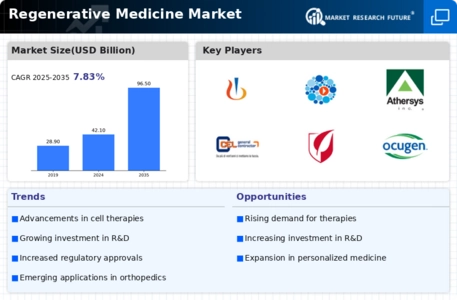
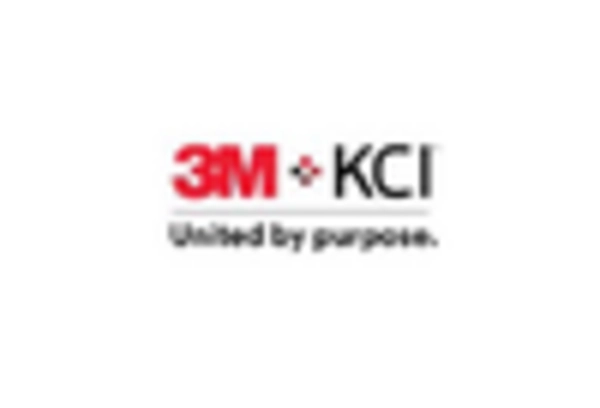
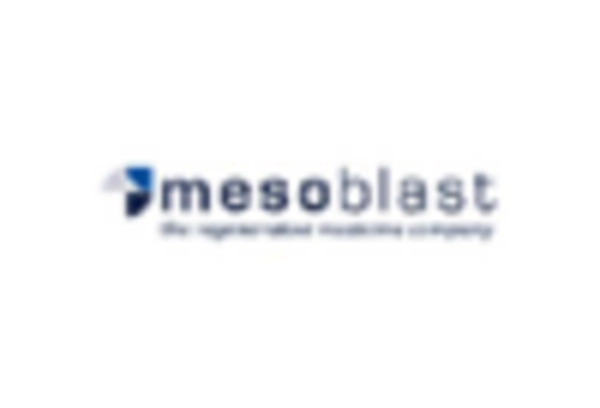

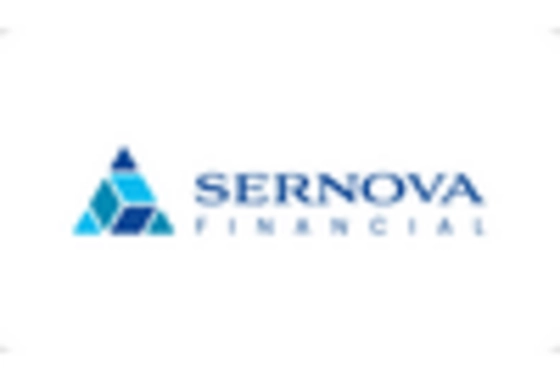
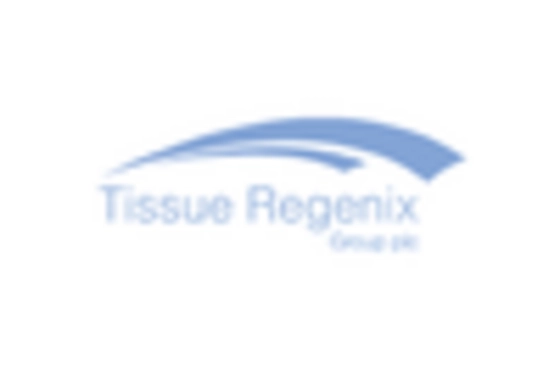
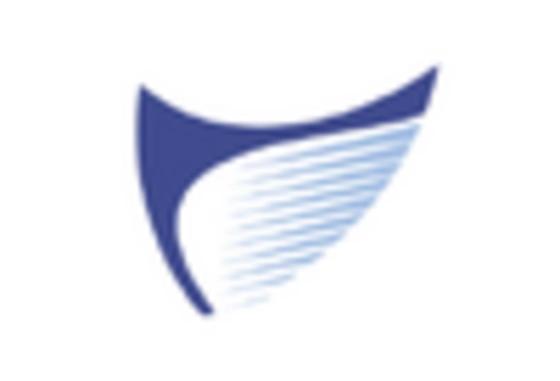

Leave a Comment